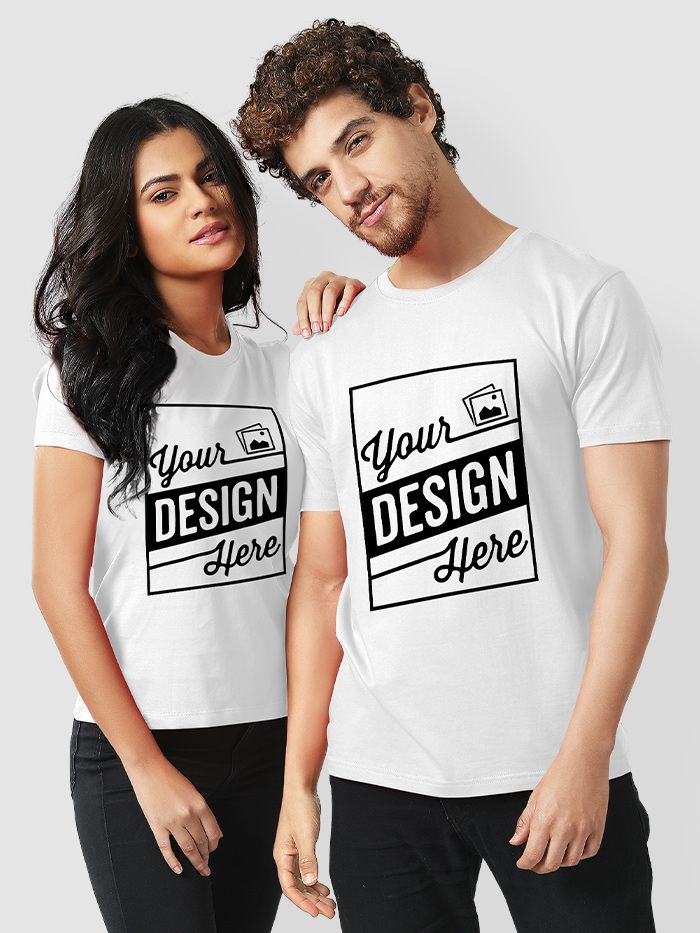
Custom T-shirts: The Ultimate Guide to Designing Your Perfect Shirt
Custom t-shirts have become an essential part of fashion, branding, and personal expression. Whether it’s for corporate promotions, personal events, or simply to showcase individuality, custom t-shirts are in high demand. From choosing the right fabric to picking designs that resonate, this comprehensive guide covers everything you need to know about custom t-shirts. Let’s explore why custom t-shirts matter, how to create them, and what you need to keep in mind to ensure the best possible results.
Why Custom T-Shirts Are Popular
1. A Versatile Fashion Staple
Custom t-shirts are incredibly versatile, serving a variety of purposes from casual wear to promotional attire. Whether you’re creating shirts for a family reunion, a corporate event, or your own fashion line, a well-designed t-shirt offers functionality without sacrificing style. They appeal to people across all age groups and can be worn in a multitude of settings, both formal and informal.
2. Branding and Marketing Tool
Businesses have found custom t-shirts to be a powerful branding tool. With the right design, these shirts can promote products, increase brand awareness, and even serve as walking billboards. For small businesses and startups, custom t-shirts offer an affordable way to engage customers and increase visibility.
3. Personal Expression and Creativity
Custom t-shirts also provide a platform for personal expression. From favorite quotes and artwork to showcasing hobbies or affiliations, these shirts can be designed to reflect one’s personality, interests, or causes they are passionate about. This makes them popular for personal gifts, group events, and even as merchandise for content creators.
4. Event Memorabilia
Custom t-shirts are often used to commemorate special occasions such as weddings, concerts, sports tournaments, or charitable events. They serve as lasting memorabilia that participants can cherish long after the event has concluded.
Steps to Designing a Custom T-Shirt
Creating a custom t-shirt involves several key steps. Here’s a breakdown of the process from concept to finished product.
1. Define Your Purpose
The first step in designing a custom t-shirt is to clarify the purpose. Are you designing shirts for personal use, a business, or an event? Understanding the reason behind your project will guide many of your decisions, including the design, colors, and quantity of t-shirts.
2. Choose the Right T-Shirt Style
There are various styles of t-shirts to choose from depending on your target audience or intended use. Common styles include:
- Crew neck – The most basic and widely used t-shirt style.
- V-neck – Adds a bit of sophistication and is often preferred for a more casual yet stylish look.
- Long-sleeve – A good option for colder climates or more formal environments.
- Raglan or baseball t-shirts – Great for sports teams or outdoor events.
Choosing the right style is crucial, as it can affect comfort, usability, and the overall impact of the design.
3. Select the Fabric
Fabric choice is another important factor in ensuring the success of your custom t-shirt. Different materials offer different levels of comfort, durability, and print quality. Here are a few popular fabric types:
- Cotton – Soft and breathable, making it perfect for everyday wear. However, it may shrink over time.
- Polyester – Known for its durability and moisture-wicking properties, making it great for athletic wear.
- Blends – A combination of cotton and polyester that offers both comfort and durability.
- Tri-blend – A mix of cotton, polyester, and rayon, providing a premium, soft feel.
4. Pick a Printing Method
There are multiple ways to print your design on t-shirts, and each has its pros and cons depending on your budget, the complexity of the design, and the number of shirts you’re ordering. Here are the most common methods:
- Screen Printing – The most popular option for custom t-shirts, especially for large orders. It offers a vibrant finish but is more cost-effective for bulk printing.
- Direct-to-Garment (DTG) – Ideal for smaller orders with complex or colorful designs. This method allows for detailed images but may not be as durable as screen printing.
- Heat Transfer – Involves printing the design on special paper and then transferring it onto the shirt using heat. This is best for intricate designs but can feel less durable than other methods.
- Embroidery – Often used for logos or text-based designs, this method provides a high-end look, particularly on polo shirts or professional attire.
5. Create the Design
The design of your custom t-shirt is arguably the most important aspect. Whether you are designing it yourself or hiring a graphic designer, here are some tips to keep in mind:
- Simple is Best – A clear, minimalist design is often more impactful and easier to produce.
- Choose Colors Wisely – Ensure that the shirt color and design colors complement each other. Avoid combinations that clash or make the design hard to read.
- Use High-Quality Images – If you’re using an image or logo, make sure it is high resolution to ensure a clean, crisp finish on the shirt.
- Think About Placement – Common placements include the front center, back, and left chest, but you can get creative with sleeve prints or wrap-around designs.
6. Pick the Right Size and Quantity
When ordering custom t-shirts, it’s important to consider the size range and quantity. A mix of sizes ensures that your t-shirts cater to everyone in your target group. As for quantity, bulk orders often come with discounts, so it’s wise to order a bit more than you think you’ll need, especially for events or promotions.

How to Order Custom T-Shirts
After you’ve nailed down your design, style, and printing method, the next step is to find a reliable vendor. When choosing a company to print your custom t-shirts, consider the following:
- Reputation and Reviews – Look for companies with strong reviews and a good reputation for delivering quality products.
- Turnaround Time – Make sure the company can meet your deadline, especially if you need the shirts for an event.
- Pricing and Discounts – Get quotes from multiple vendors to compare prices, but also be aware that cheaper doesn’t always mean better quality.
- Customer Service – Choose a company that offers clear communication and is willing to work with you to resolve any issues that might arise.
Caring for Custom T-Shirts
To prolong the life of your custom t-shirt, it’s important to follow proper care instructions:
- Wash Inside Out – This helps protect the print from friction and fading.
- Use Cold Water – Hot water can cause colors to fade or the fabric to shrink.
- Air Dry or Use Low Heat – High heat can damage both the print and fabric, so it’s best to air dry your shirt or use a low heat setting on your dryer.
Conclusion: Crafting the Perfect Custom T-Shirt
Whether you’re promoting your brand, making a fashion statement, or commemorating a special event, custom t-shirts offer endless possibilities. From selecting the right material to creating an eye-catching design, the key to success is careful planning and attention to detail. By following the steps outlined in this guide, you can ensure that your custom t-shirts are a hit and leave a lasting impression.


